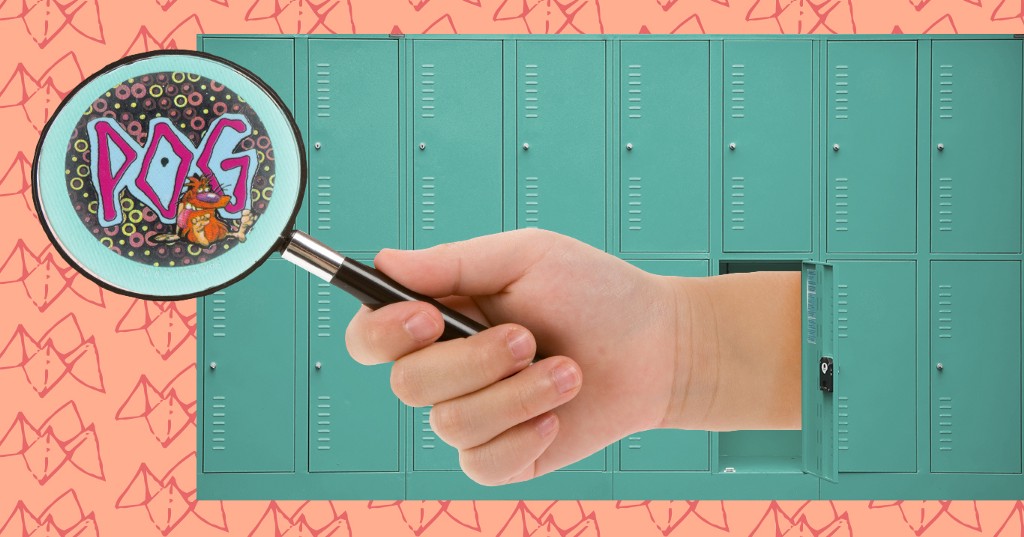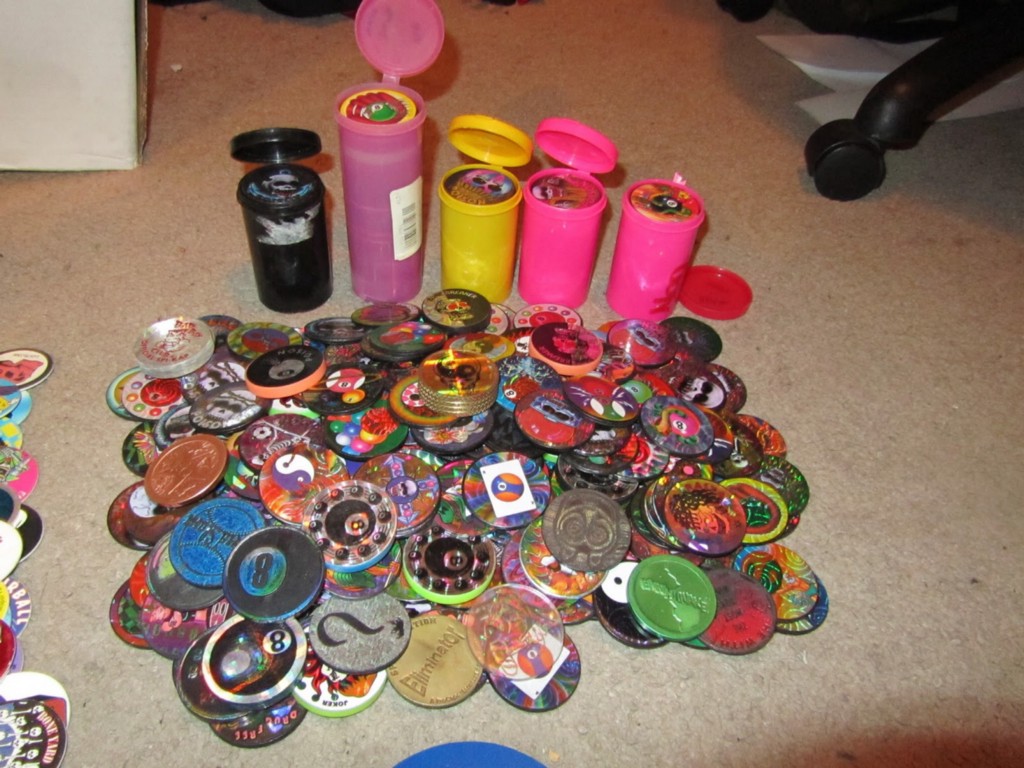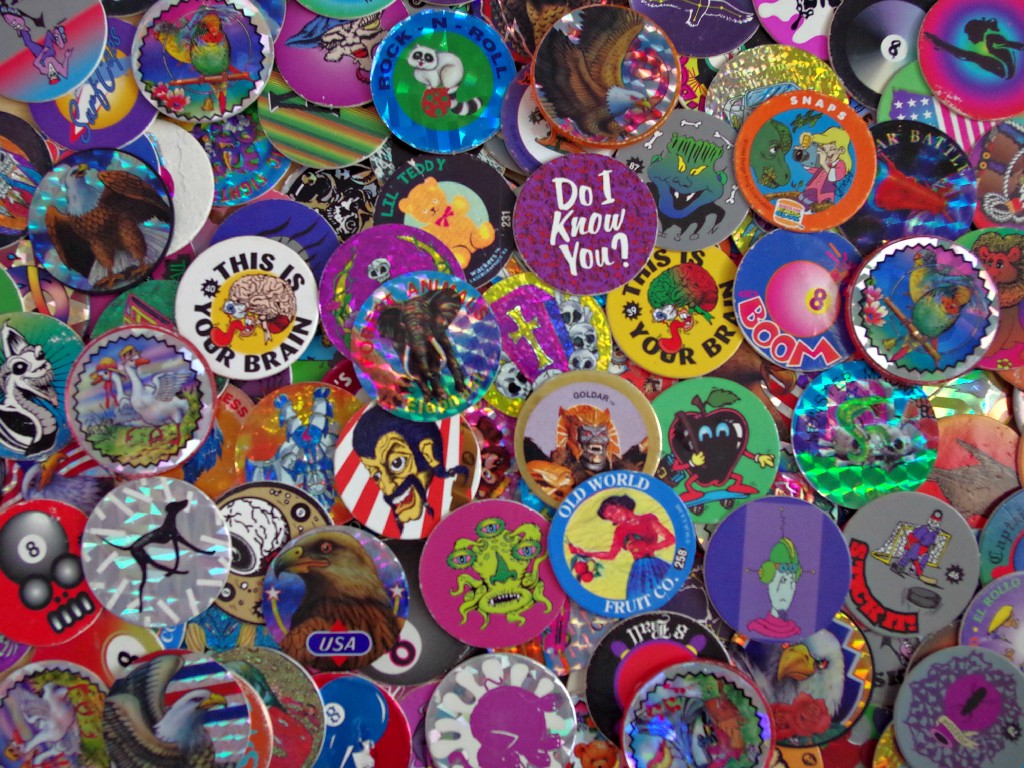Why Were Pogs Banned In School?

Forbidden fun is the best kind.
Our Middle School Mysteries series investigates childhood rumors you never bothered to fact-check yourself.
The bottom of my family’s kitchen pantry is where my mom has stashed the dregs of my childhood. One day, while digging through the cartons of crusty markers, Scholastic Reading Club origami books and stubby colored pencils, I discovered a Ziploc bag stuffed with holographic cardboard discs.
They were, of course, Pogs. I thought back to the time when these pieces of cardboard were like schoolyard narcotics — addictive but forbidden. Remember how they became so popular that teachers banned them? The reason was that Pogs apparently perpetuated child gambling.
Huh?
How it all got started
Pogs began with a 17th century Japanese game called Menko where you’re supposed to throw your card at another player’s with the goal of making it (your opponent’s card) flip over.
Japanese immigrants brought Menko to Hawaii in the 1920s. Years later, one Hawaiian teacher taught her students the game as a fun way to improve their math skills. The teacher used milk caps from a local dairy. In addition to milk, the dairy made passionfruit, orange and guava juice. People in Hawaii started to use the caps from those juices to play games — hence “Pogs” (from Passionfruit, Orange and Guava).

Kids collected and traded Pogs, but the game itself brought the real fun — and trouble. An opponent stacked their Pogs face down, and the other player threw down the “slammer,” a Pog made of thicker plastic than the rest, winning the pieces that landed face up.
It was impossible to avoid Pogs. After a California entrepreneur bought the Pog trademark, he went wild with licensing and commercialization. During peak Pogmania (1994–1995), over 350 million Pogs were sold. There was a Pog mascot, Pog tournaments and branded, limited-edition designs up the wazoo — even from Pope John Paul II.
Naturally, the Pog craze swept classrooms. As Pog play bled from recess into the classroom, schools throughout the US, Canada and Europe responded to the distraction with a ban. It’s not a shock, since we know educators won’t tolerate anything that could disturb us from learning important things like cursive or long division.

Administrators thought kids learned how to gamble by playing Pogs. “I guess you could liken it to going to Las Vegas and losing your money on the table,” an elementary school principal told the Los Angeles Times in 1994. “Adults don’t like that. And children don’t like losing their chips.”
When the game got heated, it often caused recess scuffles and classroom conflicts that teachers grew tired of fixing. “We can’t allow ourselves to be in a situation where we’re babysitting for Pogs rather than running a school,” another elementary school principal told the Los Angeles Times.
Teachers also worried students missed out on physical exercise when they spent recess sitting around playing with pieces of cardboard.
After the principal of one Connecticut elementary school banned Pogs in 1995, students flexed their protest muscle early and drew up a petition. Students and teachers at the school came to an agreement: students could swap Pogs once a week during lunch as long as they didn’t actually play the game.
The ban fizzled out when the fad did, sometime in the late 90s. The one-time currency of the playground fell victim to its own over-saturation. But it taught us an important lesson: Forbidden fun is the best kind of fun there is.
